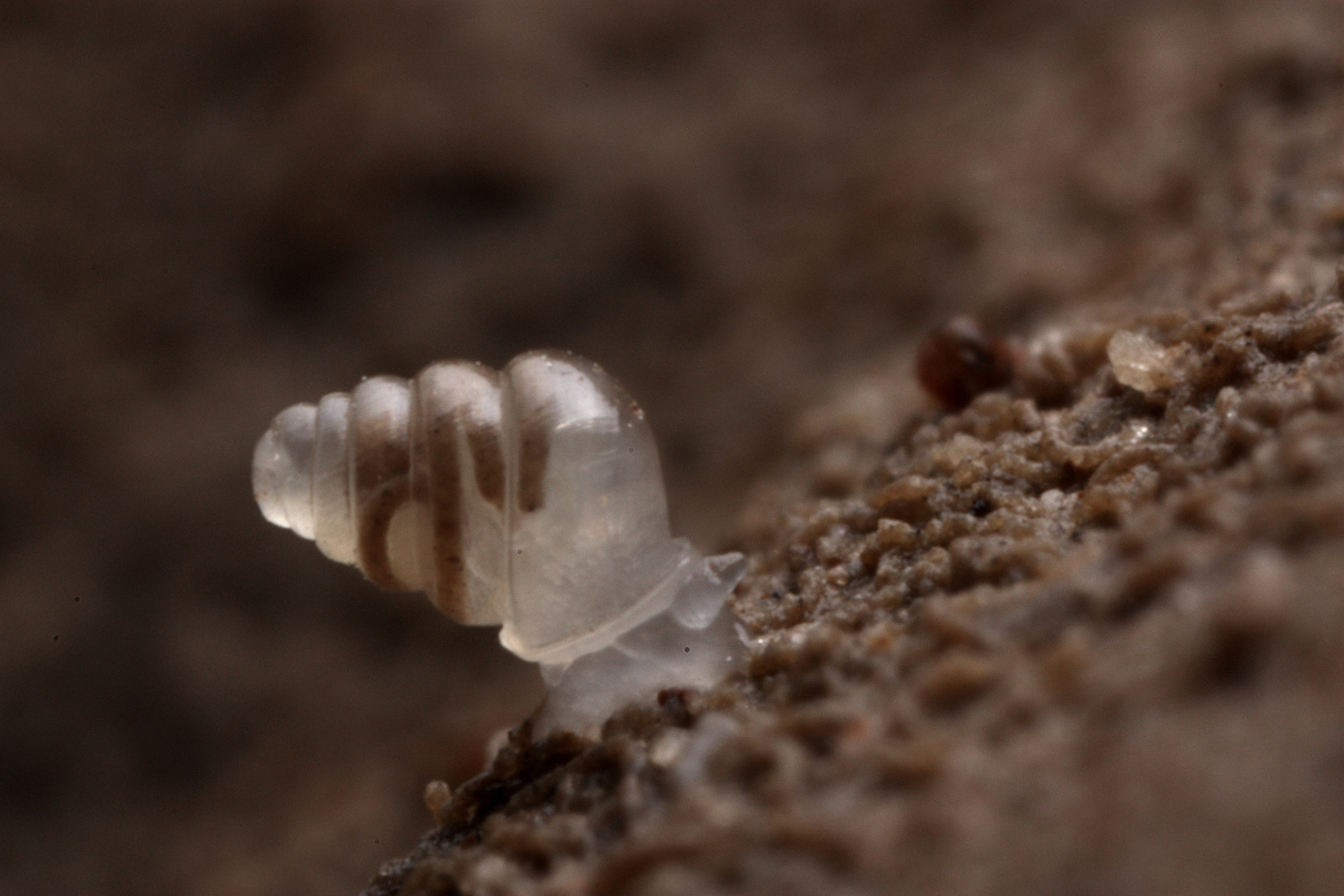The Ghostly Domed Land Snail
This tiny snail lives in one of the world’s deepest cave systems.

A living specimen of "Zospeum tholussum" in the Lukina Jama-Trojama cave system in Croatia. Photo by Jana Bedek
The domed land snail above has no need for eyes. Found at around 3,000 feet below the earth’s surface in the Lukina Jama–Trojama cave system in western Croatia, this tiny gastropod—known as Zospeum tholussum—lives in complete darkness, says Alexander Weigand, an expert in cave animals who was the first to describe the species in 2013.
The lack of light also explains the snail’s ghostly translucent shell.
“Snails normally use pigment to hide, to protect themselves, or to mate,” Weigand says. But “when you are in a cave, the mating partner can’t see you, or enemies can’t see you, so there is no need for pigmentation” in the shell or the body, he says.
The shape of its translucent shell is one trait that sets this species apart from the other 21 land snails in the Zospeum genus, says Weigand. In particular, the second whorl in the shell is noticeably larger and creates a distinct structure: “The top of the shell is like a dome of a church,” Weigand says.
The diminutive snail—measuring just one to two millimeters in length—is also quite slow, says Weigand. Research suggests that it can only move a few centimeters a week and mainly crawls in circles. Weigand suspects the snail uses air currents and water that’s dripped into the cave after a storm as modes of transport.
The snail was first collected in July 2010, when the Croatian Biospeleological Society and Croatian Mountaineering Association made an expedition to the Lukina Jama–Trojama cave system. The system is one of the deepest in the world—and the deepest in Croatia—descending at least 4,500 feet from its snow-and-ice-covered entrance. The team recovered just one living Z. tholussum specimen during the five-day expedition, according to Weigand, but they also found various empty shells in the same cave chamber. They sent the live snail to Weigand in Germany so that he could identify it, and it now sits (deceased) in the Senckenberg Museum in Frankfurt.

The domed land snail also has another claim to fame: It was named one of the Top 10 New Species of 2014 by the SUNY-ESF International Institute for Species Exploration. The list is meant to “bring attention to the fact that, quietly and out of the public eye, there’s an army of dedicated botanists and zoologists out there searching for and identifying new species every year,” says the institute’s founding director, Quentin Wheeler. He scours (with help) academic journals to narrow the list of approximately 18,000 new species that are named each year down to about 40. He then presents those to a panel of judges—consisting of various botanists and zoologists from around the world—that picks the finalists (there are some self-nominations and submissions from journal editors to choose from, too). The judges are encouraged to select species that are unusual and particularly attention-grabbing, according to Wheeler.
In the case of the domed land snail, Wheeler says its habitat probably helped it stand out. “It seems like every year we’re finding these things that are incredibly deep below the surface, and at depths where people didn’t really expect to find them,” he says. “It’s just fascinating when you find multicellular animals making a living at such deep places and caves.”
Chau Tu is an associate editor at Slate Plus. She was formerly Science Friday’s story producer/reporter.